PROGRAMME
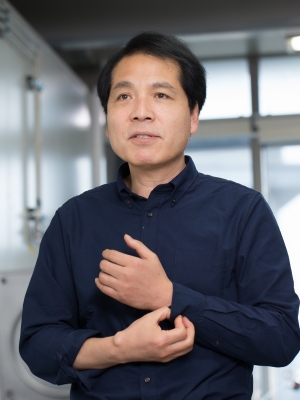
Prof. Sang Il Seok
School of Energy and Chemical Engineering, Ulsan National Institute of Science and Technology (UNIST), Korea
Biography
Sang Il Seok is currently a Distinguished Professor at the School of Energy and Chemical Engineering, Ulsan National Institute of Science and Technology (UNIST), Korea. He also holds a dual appointment as an adjunct professor at the Korea Research Institute of Chemical Technology (KRICT), Korea. He obtained his PhD degree at Department of Inorganic Materials Engineering of Seoul National University, Korea, in 1995. From 1996 to 1997, he experienced a post-doc to investigate defects and transport in Fe-Ti-O Spinel structure in Cornell University, USA, and visiting scholar in University of Surrey, UK, in 2003, and École Polytechnique Fédérale de Lausanne (EPFL), Switzerland, in 2006 respectively. His major research interests were functional inorganic-organic hybrid materials through solution process for optical amplifier, high dielectrics, corrosion-resistance coatings etc. Now, his research focus is based on inorganic-organic hybrid solar cells, in particular perovskite solar cells. He published around 200 peer-reviewed papers including Nature, Science etc. with several awards for his Excellency. He is the recipient of “Korean Scientist Award from the Korean government in 2017.
Keynote Title: Manipulating perovskite materials for highly efficient and stable perovskite solar cells
The general formula AMX3 of inorganic-organic hybrid perovskite materials (A: organic cation, methylammonium (MA) or formamidinium (FA), M: metal, X: halide anion, Br, I) exhibits beneficial properties for high-performance photovoltaic systems such as a suitable band gap (1.5 - 1.4 eV), high absorption coefficient (104 - 105 cm-1), low exciton binding energy (< 50 meV), and long charge-carrier diffusion length (~175 µm). In addition, these materials exhibit easy crystallization at low-temperature by solution processing, resulting in their low cost. Based on above distinct properties of perovskite materials, we have designed a new photovoltaic platform for efficient perovskite solar cells (PSCs). The performance has been remarkably increased to more than 22 % by introducing a mediator to retard the rapid crystallization between organic cations and PbI2, and manipulate the chemical composition of the perovskites via solvent engineering, intramolecular exchange process, and defect engineering, making these routs attractive for attaining low-cost and high-performance devices. In this presentation, I will introduce chemical manipulation of perovskite materials to improve the efficiency and long-term stability of PSCs.

Prof. Niyazi Serdar Sariciftci
Founding Director / Head Professor
Linz Institute for Organic Solarcells (LIOS) / Institute of Physical Chemistry Johannes Kepler University Linz
Biography
Prof. Sariciftci is Ordinarius Professor for Physical Chemistry and the Founding Director (Vorstand) of the Linz Institute for Organic Solarcells (LIOS) at the Johannes Kepler University of Linz/Austria.
He studied at the University of Vienna (Austria) and graduated as PhD in physics in 1989. After two years postdoctoral study at the University of Stuttgart (Germany) he joined the Institute for Polymers and Organic Solids at the University of California, Santa Barbara, USA, by Prof. Alan J. HEEGER, Nobel leaurate 2000 for Chemistry. His major contributions are in the fields of photoinduced optical, magnetic resonance and transport phenomena in semiconducting and metallic polymers. He is the inventor of conjugated polymer and fullerene based "bulk heterojunction" solar cells. Prof. Sariciftci published over 600 publications and with over 70000 citations he is one of the most cited scientists in material science (2011, Thompson Reuter ranking No: 14 of the world in material science). Google scholar ranks Sariciftci with an h-index of >110. Sariciftci has composed 8 books and educated several academic and industrial scientists. He also initiated seven spin off companies for organic optoelectronics. He is recipient of several prizes among them the National Science Prize of Turkey 2006 and the Austrian Scientists of the year Prize for Research 2008. He received the Medal for Humanity of the City of Linz 2009 and the Kardinal Prize for Science of the Archbishop in Vienna 2010. In 2012 he was awarded the prestigious Wittgenstein Prize of Austria. He is a Fellow of the Royal Society of Chemistry (FRSC), Fellow of SPIE, and member of several societies such as American Chemical Society, Materials Research Society, Austrian Chemical Society and Austrian Physical Society. He was selected as corresponding member of the Academy of Science in Austria (ÖAW). Sariciftci has been awarded honorary doctorate by the Abo Academy in Finland in 2011 and University of Bucharest in Romania in 2012. Recently, Sariciftci received the TÜBA Science Prize of the Turkish Academy of Sciences (2015) and selected as member of the Turkish Academy of Sciences in 2017.
Keynote Title: Organic and bio-organic systems for solar energy conversion and CO2 Recycling
Organic photovoltaic cells are maturing from the academic research into the industrial development, entering the markets. Pure organic nanostructures and organic/inorganic hybrid nanostructures are comparatively studied for such devices. This talk gives an overview of materials’ aspect and devices.
In order to account for a sustainable future, the application of biodegradable and biocompatible systems for organic optoelectronics are needed. The use of cheap electronic devices in a large scale will introduce a “consumable electronics” into the market of “consumer electronics”. Therefore environmentally friendly materials are important to use. This is a next great challenge to material science in organic electronics. New developments of bio-inspired and/or bio-origin, bio-compatible materials from our institute will be reported. Such materials can also be used to interface the biological and biomedical research with the organic electronics field.
Last but not least the conversion of CO2 to methane (or other synthetic fuels) using solar energy is an important step to make an efficient, large scale energy storage. At the same time this will make a cyclic and sustainable CO2 economy. We report organic as well as bio-organic catalysts which can be used in photo-electro-catalytic conversion devices. Such bio-catalysts can be enzymes as well as living bacteria immobilized on electrodes. Selectivity of such bio-catalysts is very high and combined with the room temperature operation of such bio-electro-catalytic systems makes them industrially highly attractive.
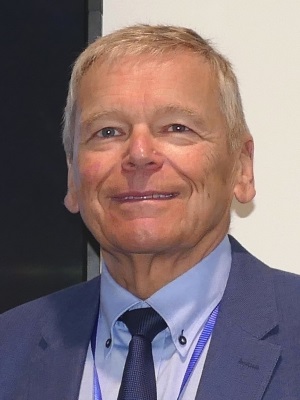
Prof. Helmut Mayer
Albert-Ludwigs-University of Freiburg, Chair of Environmental Meteorology
Biography
Prof. Mayer is currently a retired professor at the Chair of Environmental Meteorology, Albert-Ludwigs-University of Freiburg (Germany), which emerged from the Meteorological Institute at this University in 2015. He studied meteorology at the Ludwig-Maximilians-University of Munich (Germany) and graduated with a diploma in 1971. He obtained his PhD degree at the Faculty of Physics, University (TH) of Karlsruhe (Germany), in 1974 and was habilitated in Forest Meteorology and Climatology at the Faculty of Forest Sciences, Ludwig-Maximilians-University of Munich (Germany), in 1985. He worked as a research fellow from 1971 to 1974 at the Meteorological Institute of the University (TH) of Karlsruhe and from 1974 to 1992 at the Chair for Bioclimatology and Applied Meteorology of the Ludwig-Maximilians-University of Munich. In 1992, he was appointed to the Chair of Meteorology and Climatology at the Albert-Ludwigs-University of Freiburg, which included the position of the director of the Meteorological Institute at this University. With respect to long-term research activities abroad, he carried out his research from August 1997 to March 1998 at the Department of Earth and Planetary Sciences, University of New Mexico, Albuquerque, NM, USA. He retired in autumn 2015, but he continues his research resulting in publications and presentations at different conferences.
His major research interests are in the fields of environmental meteorology, especially urban climatology, urban meteorology, urban air pollution and urban human-biometeorology, as well as in forest meteorology. Applied methods and results of his research are addressed in about 390 scientific publications in international peer-reviewed journals. Against the background of new challenges due to climate change, they reflect the increasing importance of "bringing science into practice". He was the field editor for urban climatology in the scientific journals Climate Research (2003 to 2013) and International Journal of Biometeorology (2007 to 2014). He is a member of several scientific societies such as International Association for Urban Climate or International Society of Biometeorology. For his fundamental work in environmental meteorology and forest meteorology as well as especially in urban human-biometeorology, he was awarded the "Reinhard-Süring-Badge" by the German Meteorological Society in March 2019.
Keynote Title: Urban heat waves
Heat waves represent severe meteorological phenomena, which are caused by specific regional weather patterns. Different definitions are available to identify heat waves. They are almost always based on threshold values for the air temperature and, therefore, not impact-related. Using the example of humans, an impact-related definition of heat waves, e.g. by suited threshold values for thermo-physiological assessment indices, could enable that the adaptation and acclimatization of humans to severe heat is considered. Results of climate simulations for different regions worldwide indicate that heat waves will be more frequent and intense as well as longer lasting in the future.
Cities contribute to an additional enhancement of this thermal background conditions due to their own development. It is mainly caused by urban land use changes due to the increased demand for commercial and residential space as well as energetic processes related to it. Thus, the impairment of well-being, efficiency and health of the rising urban population, especially risk groups such as infants, sick and elderly people, is increasing during urban heat waves. It reaches an extent that urban planning, especially in cities where the design and population are not adapted to heat waves (e.g. in Central Europe), is facing the challenge to develop long-term local countermeasures against human heat wave stress, which should be based on methods and findings in the field of urban human-biometeorology. The currently available concepts mostly derived from numerical scenario simulations are characterised by a heat-reducing urban design with a higher share of green infrastructure and the effort to comply with the objectives of climate and environment protection, e.g. avoidance of electrical air conditioning systems, especially in cities located in temperate climate zones. The public must put pressure on decision-makers like politicians that the countermeasures are actually implemented in existing and future "hot spots" in cities.
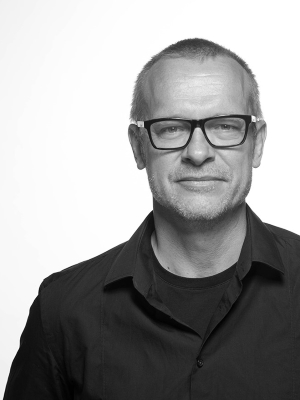
Prof. Horst Hörtner
Senior Director, Ars Electronica Futurelab
Biography
Horst Hörtner is a media artist and researcher. He is expert in design of Human Computer Interaction and holds several patents in this field. He started to work in the field of media art in the 1980ies and co-founded the media art group x-space in Graz/Austria in 1990. Hörtner is founding member of the Ars Electronica Futurelab in 1996 and since then directing this atelier/laboratory.
Since 2013, Horst Hörtner also holds a position as conjoint Professor at the University of Newcastle/Australia. He is working in the nexus of art & science and giving lectures and talks at numerous international conferences and universities.
Keynote Title: Art & Science about the transdisciplinary, the accessible and the tangible
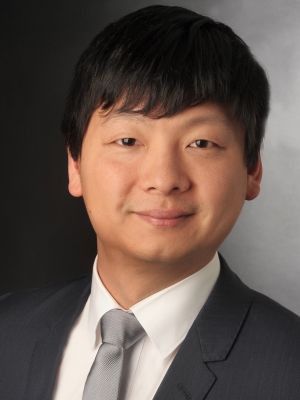
Dr.-Ing. Matthias Brockmann
Managing Director, Cluster of Excellence, RWTH Aachen University
Biography
Dr. Brockmann is managing director of the Cluster of Excellence „Internet of Production“ at RWTH Aachen University. Before this position, he was research group leader of “Product and Process Monitoring” group and Chief Engineer at the Chair of Manufacturing Technologies led by Prof. Fritz Klocke.
Keynote Title: Internet of Production – Research Roadmap “Production Technology” at RWTH Aachen
The vision of the "Internet of Production" describes the common research roadmap of RWTH Aachen University concerning Industrie 4.0. Within a large-scale interdisciplinary team, researchers from engineering, computer science and social science are shaping the future of production technology. This presentation will provide an overview of actual research topics, as well as potentials and risks for producing industries in the context of the Internet of Production. Core concepts like the Digital Shadow, a new reference infrastructure and approaches for a new level of cross-domain collaboration will be explained. Practical examples will be presented from different fields of production technology.
Profile
The Cluster of Excellence „Internet of Production“ is part oft he Excellence Strategy of Ger-many’s Federal Republic and States in Aachen and bundles the strengthes of RWTH Aachen University and the Fraunhofer Institutes IPT, ILT and FIT.
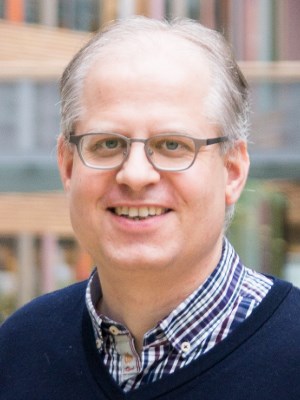
Dr. Marcel Langner
Head of Unit, German Environment Agency
Biography
Working at the German Environment Agency since 2013, Marcel Langner focused on assessment of measures to reduce ambient concentrations of air pollutants and on scenarios of future emission trends and their impacts on air quality in Germany. His work includes the evaluation of measurements of air pollutants and results from model outputs, both at the local and the regional scale. His expertise also covers requirements to test equipment for emission and ambient air monitoring of air pollutants. He has a special scientific interest in particle deposition on vegetation.
Keynote Title: Particulate matter as a key air pollutant in Germany and the whole EU: Sources and abatement strategies
EU-Directive 2008/50/EC on ambient air quality and cleaner air for Europe aims to prevent or reduce harmful effects on human health and the environment as a whole. Within urban areas, air quality control focuses clearly on the harmful effects of air pollutants on human health, whereas effects on ecosystems like acidification or eutrophication are more important in rural areas.
The most important instrument for air quality control on a local level in Europe are air quality plans. If limit or target value for air pollutants are exceeded, air quality plans have to be established. Therefore, measures by local authorities are driven mainly by the level of existing limit or target values. Unfortunately, limit values for particulate matter in the EU are considerably higher compared to the values recommended by the World Health Organization (WHO). In parts of Eastern Europe and Northern Italy, concentrations of ambient particles are frequently above the limit values and can trigger local measures. In most parts of Western Europe and especially in Germany, however, particle concentrations are usually below the limit values. Here, the most urgent problem for local authorities are wide-spread exceedances of limit values for nitrogen dioxide at traffic related measurement sites. In the case of nitrogen dioxide, the limit value in the EU reflects the WHO recommendations. Therefore, measures to reduce ambient nitrogen dioxide, including bans on older diesel passenger cars, are needed to ensure compliance with the limit value and protect the health of people living in the polluted areas. Unfortunately, only limited additional measures to reduce particle pollution are implemented, although many studies show that even in Western Europe particles cause stronger health effects compared to nitrogen dioxide.
To implement appropriate measures to abate air pollution, a sufficient knowledge of relevant sources is very important. Analyses of urban and local traffic increments provide hints of relevant sources. In Germany, local traffic increments for nitrogen dioxide in urban environments are in the range of 50 per cent, indicating that road traffic is the major source for this pollutant. For PM10, local traffic increments in Germany are currently below 20 per cent showing the success of measures like the introduction of particle filters for diesel passenger cars. However, other sources like residential wood combustion or secondary particles formation caused by ammonia emitted by agriculture, which has been proved by many source apportionment studies, become more important. Especially the reduction of secondary particles required more regional/national or even international measures to reduce emissions of precursors. To trigger these measures, member states of the EU have to draw up, adopt and implement national air pollution control programmes under Directive 2016/2284 on the reduction of national emissions of certain atmospheric pollutants. This Directive sets up national reduction commitments for emissions, including emissions of primary PM2.5 and precursors of secondary particles, and will provide a cornerstone for further improvement of air quality in Europe.

Prof. Veronique Riffault
Professor, IMT Lille Douai
Biography
Prof. Veronique Riffault is a Full Professor at the Department of Atmospheric Sciences and Environmental Engineering (SAGE) at IMT Lille Douai. She received her PhD from the University of Orleans in 2002. After a 2-year postdoctoral position at ESRL-NOAA/Univ. Colorado in Boulder (USA), she was recruited at IMT Lille Douai in 2006 and got her Habilitation diploma from the University of Lille in 2012. She is the current scientific coordinator of the ¡°Reactivity and air treatment¡± group and head of the Particulate Organic Matter lab at SAGE. Her research activities are focused on the characterization of fine aerosol composition and formation processes through lab and field experiments, which have led to more than 50 publications in peer-reviewed journals.
Keynote Title: Current issues linked to particulate matter in North-Western Europe
Particulate matter (PM) or aerosols can be defined as solid or liquid particles suspended in a gas, excluding hydrometeors such as cloud and rain droplets or ice crystals. The size of PM ranges from a few nanometers up to several micrometers. Among them, fine particulate matter (PM), that is to say particles with an aerodynamic diameter smaller than 2.5 µm (PM2.5), causes several human health and environmental concerns. In 2013, the International Agency for Research on Cancer (IARC), part of the World Health Organization (WHO) even classified outdoor air pollution and one of its major components, particulate matter, as carcinogenic to human beings.
Yet (apart from a few minor but particularly toxic constituents), only its mass concentration is regulated in ambient air in Europe by the 2008/50/EC Directive, which sets a limit value of 25 µg m-3 on an average annual basis. The WHO recommends even stricter air quality guidelines with an annual average of 10 µg m-3 for PM2.5, and a 24-hour mean of 25 μg m-3 (not to be exceeded for more than 3 days/year). These limits are however frequently exceeded in many parts of the world, including the North-Western Europe region where extensive road traffic, urban density, as well as significant industrial areas are significant sources of primary or secondary particles.
Primary sources, corresponding to the direct emission of particles into the air, can be anthropogenic such as vehicular exhaust and non-exhaust emissions, biomass burning, industrial plumes, etc.; or natural such as mechanical erosion processes, sea salt or biological aerosols. But particles can also come from secondary processes related to gas-to-particle conversion, either from volatile organic compounds (VOC) which can form secondary organic aerosols (SOA), or from inorganic gases such as nitrogen or sulfur dioxides which can form secondary inorganic aerosols (SIA). These precursor gases can come from various chemical sources and therefore be of different chemical natures. Long-term observations and intensive field campaigns have been going on these past years to better assess both the spatial and temporal variability of fine particles in Europe and the underlying mechanisms and/or processes explaining the occurrence of exceedances, in order to provide models with high quality data. A few examples of these coordinated efforts will also be presented to illustrate the current issues associated with fine particles in this region.
